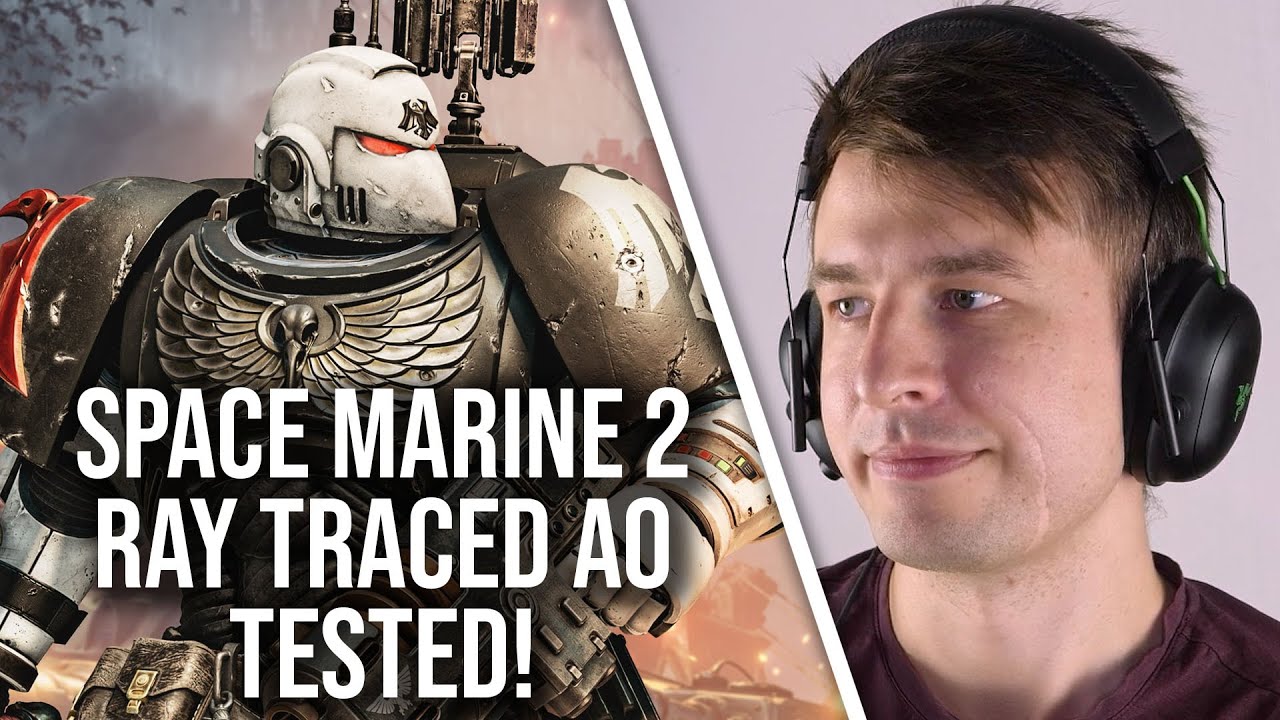The video reviews the new ray-traced ambient occlusion feature in Warhammer 40K: Space Marine 2, highlighting its subtle visual improvements and notable performance impact, while explaining limitations due to the game’s lighting design and ongoing technical issues like shader stutters and multi-monitor support. Despite these drawbacks, the game is praised for its impressive scale and quality, with hopes for future ray-tracing enhancements to further boost visual fidelity.
The video reviews the new ray-traced ambient occlusion (RTAO) feature added to Warhammer 40K: Space Marine 2, highlighting its impressive visuals but also its demanding performance requirements. The game primarily stresses the GPU rather than the CPU, and enabling RTAO reduces frame rates to about 81-82% of the performance without it. Despite this performance cost, the visual improvements are subtle and often difficult to notice due to the game’s heavy use of unshadowed lights and baked lighting techniques, which somewhat conflict with the ray-tracing effects.
The presenter demonstrates how RTAO adds more realistic shading beneath objects like the Chimera transport tank and small ground details such as shell casings and rocks, providing a more physically plausible ambient occlusion compared to traditional screen-space ambient occlusion (SSAO). However, the effect does not completely solve issues like light leaking or the “floating” appearance of objects caused by unshadowed lighting. The video explains that ambient occlusion is a hack and has limitations, especially given the game’s lighting design, which relies heavily on unshadowed lights that reduce the overall effectiveness of AO.
In terms of technical improvements, the video notes that some shader compilation stutters present at launch have been reduced by about 60%, improving gameplay smoothness in certain scenes. However, some hitches remain, possibly from other sources beyond shader compilation. The game still requires server connectivity even for single-player gameplay, which feels unnecessarily slow and cumbersome compared to older titles that load locally without delay. Additionally, the audio mix is criticized for being overly bass-heavy, which detracts from the clarity of gunfire sounds.
The reviewers also discuss the game’s multi-monitor support issues, with the game frequently opening on the wrong screen or switching monitors during startup, causing frustration. Despite these quirks, the game is praised overall for its quality and the impressive scale of the protagonist, a large armored character typical of Warhammer 40K’s aesthetic. They express hope that future updates will include more ray-tracing features, particularly reflections, which could significantly enhance the game’s visual fidelity beyond the current RTAO implementation.
In conclusion, while the addition of ray-traced ambient occlusion is a welcome update demonstrating the developer’s commitment to advancing the game’s graphics, its visual impact is limited by existing lighting design choices. Performance costs are notable but manageable on high-end hardware. The video ends on a lighthearted note discussing cultural references and other games, emphasizing that although Space Marine 2 is not without flaws, it remains an impressive and visually striking title within its genre.
